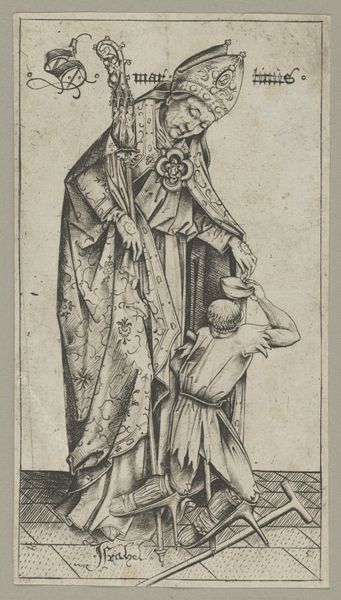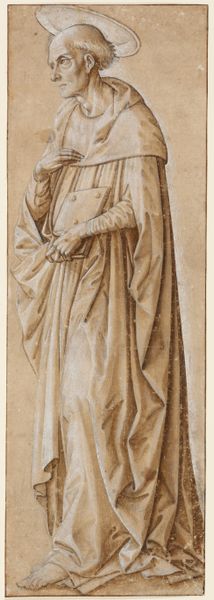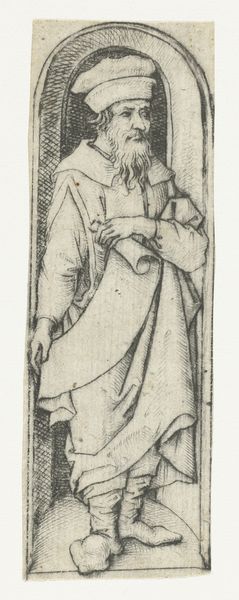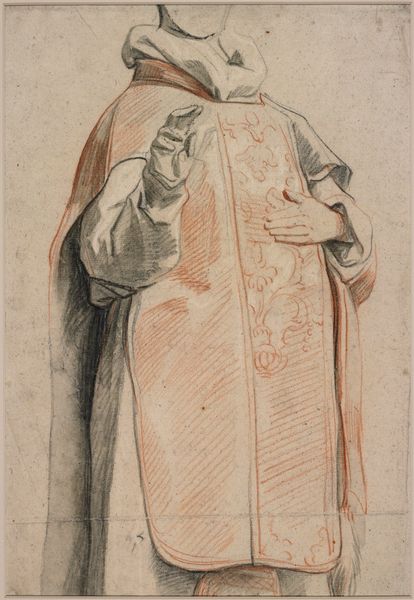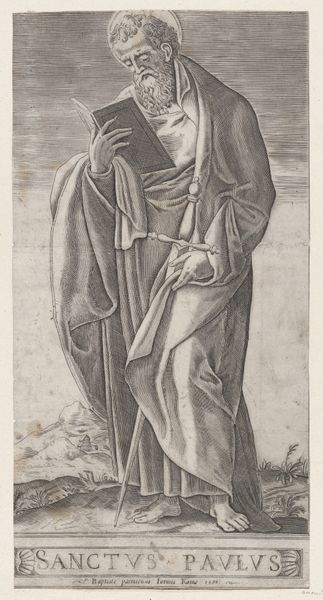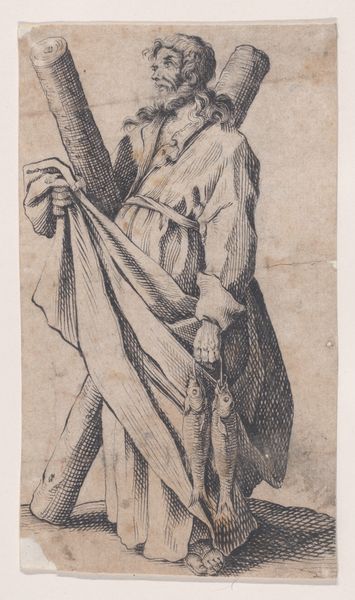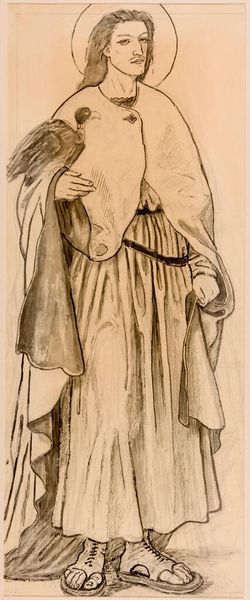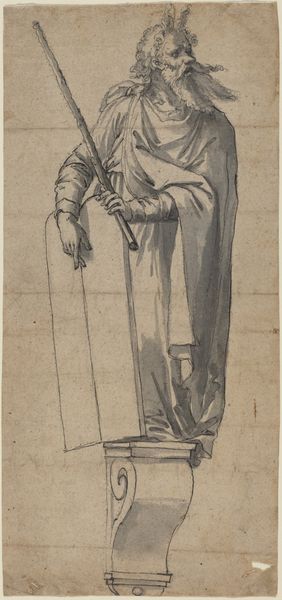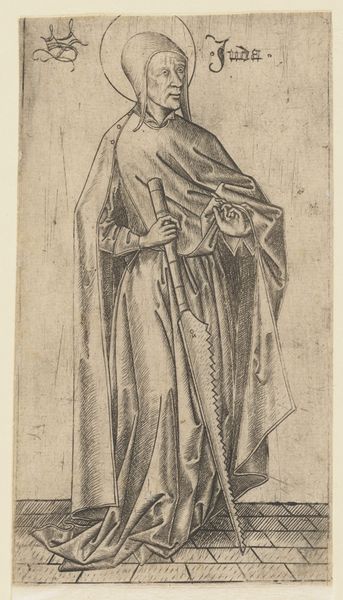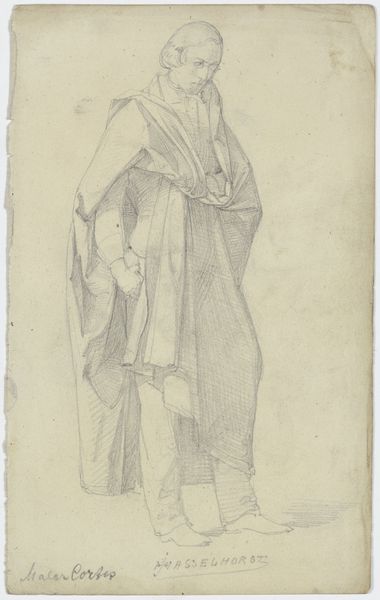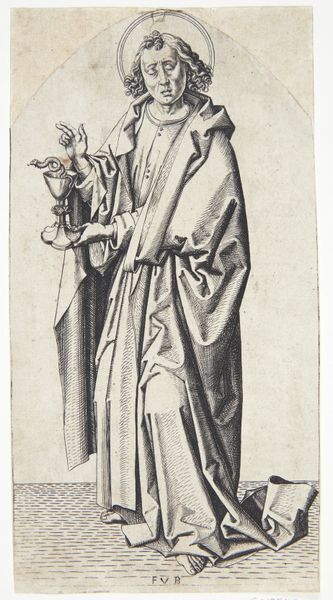
Fragmenten karton voor het glasraam in de westgevel van Joris van Egmond (Bisschop van Utrecht 1535-1559) voor de Sint Bavo Kerk te Haarlem 1541
0:00
0:00
drawing, ink, pen
#
portrait
#
drawing
#
11_renaissance
#
ink
#
coloured pencil
#
pen
#
northern-renaissance
Dimensions: height 12035 mm, width 580 mm, height 3710 mm, height 76 cm, width 27 cm, depth 27 cm
Copyright: Rijks Museum: Open Domain
Editor: We're looking at a drawing from 1541 by Gerrit Boels, a "Fragment of cardboard for the glass window in the west facade of Joris van Egmond". It's pen, ink and what seems to be colored pencil. The detail in the rendering of fabrics and textures is what strikes me. What do you notice about the piece? Curator: The immediate visual emphasis, undeniably, is on line. Note how Boels utilizes variations in line weight and density to delineate form and texture. Look at the intricate patterns within the Bishop's mitre versus the simpler lines describing the drapery. It's a calculated arrangement, don't you agree? Editor: It is really remarkable. How do you see the interplay between light and shadow affecting its composition? Curator: Precisely! Though subtle, observe the areas of hatching and cross-hatching, creating gradations of tone. This, in turn, provides volume and dimensionality. Notice particularly how he’s captured the fall of light across the bishop’s robes and the subtle indication of depth through shadow, yet it remains largely a linear, diagrammatic exercise, isn’t it? Editor: Yes, it’s as if he's mapping the effects of light rather than realistically depicting it. What do you think is the most successful element formally? Curator: The success of this piece resides in Boels’ mastery of the drawn line. Consider the semiotic function of each stroke—how it contributes to the overall structural integrity and visual legibility of the design. It’s a blueprint of intention manifested through expertly wielded graphic means. A great drawing relies on good, even aggressive decisions. And in the Northern Renaissance this drawing certainly fits the bill. Editor: It’s given me a much clearer appreciation of how line, shadow and texture serve as a foundational element in conveying not just representation, but deeper form and structure. Curator: I'm pleased to see you embracing this analytical framework. It opens up new avenues of understanding in how we approach art history.
Comments
No comments
Be the first to comment and join the conversation on the ultimate creative platform.
